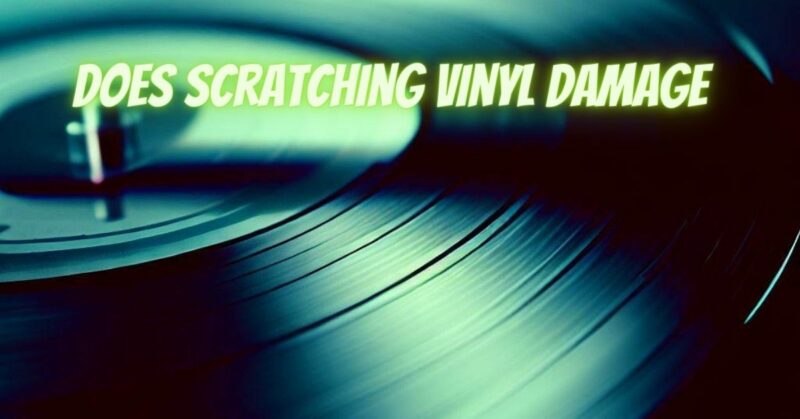Vinyl records hold a unique place in the hearts of music enthusiasts, offering a tactile and nostalgic way to experience music. The process of playing a vinyl record involves the stylus delicately tracing the grooves etched onto the surface, translating those grooves into the music that fills the air. However, the practice of scratching vinyl records, often associated with DJing and turntablism, raises questions about the potential harm inflicted on these cherished analog artifacts. In this article, we’ll delve into the world of vinyl scratching, examining its impact on records and the broader cultural significance of this art form.
The Art of Vinyl Scratching
Vinyl scratching is a technique rooted in the DJ culture, where DJs manipulate the playback of a vinyl record to create rhythmic patterns, sound effects, and unique musical expressions. This technique involves manually moving the record back and forth under the stylus, producing distinctive sounds that complement the music being played. Vinyl scratching has become an integral element of hip-hop and electronic music, showcasing the creativity and dexterity of DJs as they transform the turntable into a musical instrument.
The Dilemma: Preservation vs. Expression
The practice of vinyl scratching raises a crucial dilemma: the desire to express oneself through innovative techniques versus the need to preserve the integrity of vinyl records. Scratching, by its very nature, involves the stylus coming into direct contact with the grooves. This friction can result in wear and tear on both the stylus and the grooves, potentially affecting the sound quality and longevity of the record.
Balancing Act: Scratching Responsibly
While the act of scratching introduces friction to the record, responsible scratching techniques and considerations can help minimize potential damage:
- Equipment Quality: High-quality turntables and cartridges are designed to withstand the demands of scratching. Investing in professional-grade equipment designed for scratching can mitigate some of the wear and tear.
- Stylus Choice: DJs often use specialized stylus profiles designed for scratching. These stylus profiles are engineered to reduce wear on the grooves and prolong the life of records.
- Controlled Pressure: Scratching with excessive pressure can accelerate wear on both the stylus and the grooves. Skillful DJs learn to balance pressure and movement to achieve their desired effects while minimizing damage.
- Record Choice: Not all records are created equal. Using older or expendable records for scratching can help preserve your more cherished vinyl collection.
Cultural Significance and Legacy
Beyond the technical considerations, vinyl scratching is an art form with cultural significance. It has played a pivotal role in shaping musical genres, influencing the evolution of hip-hop and electronic music. DJs who master scratching demonstrate an exceptional level of skill and creativity, showcasing their ability to manipulate sound in real-time.
Preserving the Tradition
In the digital age, where music can be manipulated effortlessly through software, vinyl scratching stands as a testament to the hands-on artistry of DJs. While there are risks associated with scratching, DJs continue to find ways to balance expression with preservation. Scratching responsibly, using appropriate equipment, and understanding the impact on records can help safeguard the legacy of this unique form of musical expression.
Vinyl scratching embodies the duality of creativity and preservation. While it involves direct contact between the stylus and the grooves, responsible techniques and equipment choices can mitigate potential damage. The practice of scratching adds a layer of cultural significance to vinyl records, underscoring the dynamic relationship between musicians, technology, and tradition. As DJs continue to push the boundaries of what’s possible with vinyl, they also pay homage to the heritage of turntablism and its enduring impact on the world of music.


